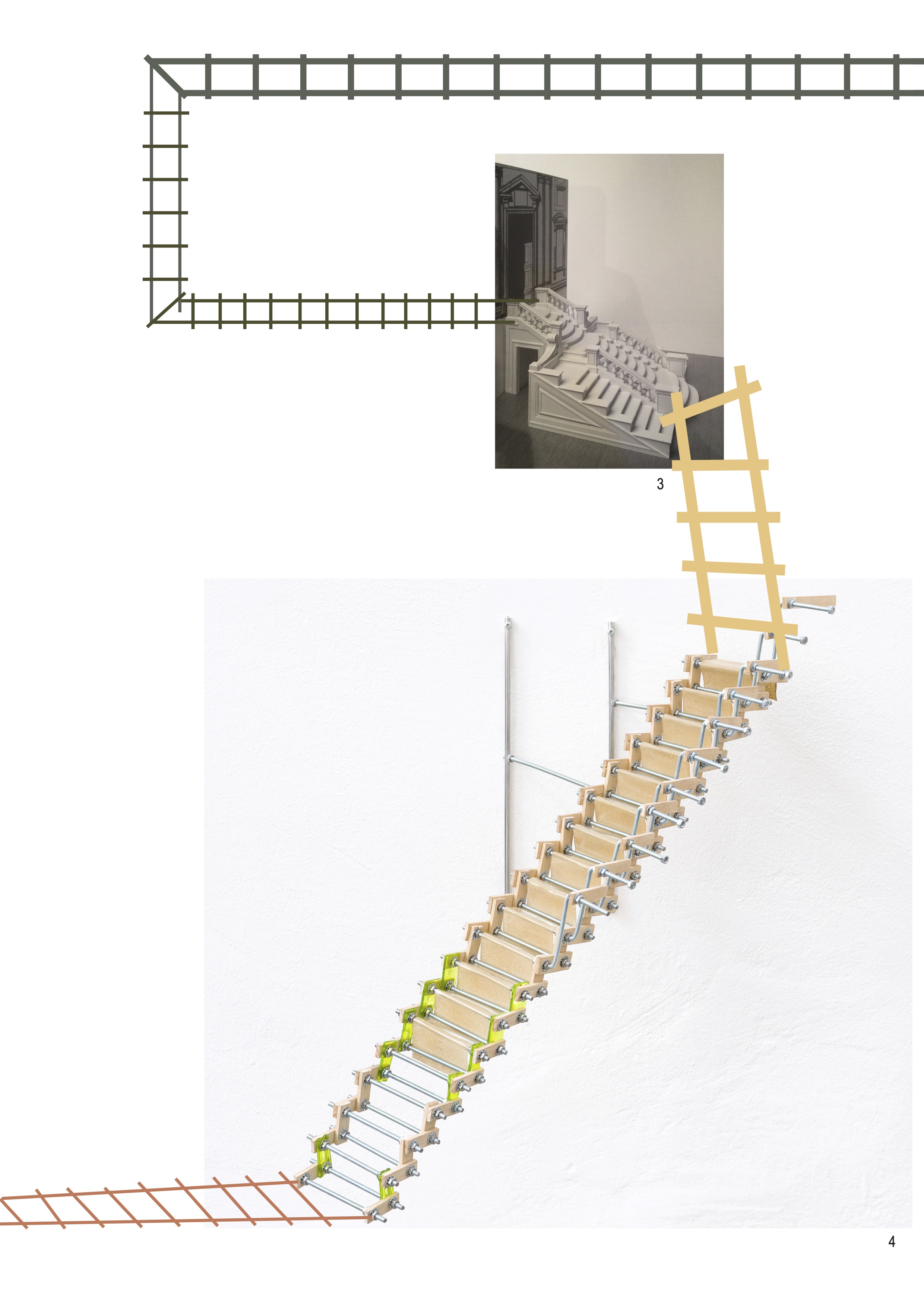
artforum.com/picks/jasmin-werner-68100
They still exist, the good things.
– Manufactum
A church window, a couple sleeping blissfully in their cozy home, the awning of a pavilion from the last garden party. Here, the world is still in order. Jasmin Werner, in her first exhibition at Gillmeier Rech, confronts the visitors with an exhibition layout that, among other things, reveals an early modern depiction of Sarah and Tobias, the Old Testament couple who represent an idealized model of marital virtue. The marriage between a man and a woman as the nucleus of society, the Christian archetype as “Home Sweet Home” fantasy, replete with puppy.
And anyway, back then when the world still was in order, we still made everything ourselves – just as Jasmin Werner does her imitation stairways, made inaccessible through dark-green dust sheeting, precisely erected with screws and metal poles. Because today’s ideals aren’t so down-to-earth after all; instead, the prevailing imperative is now one of an unremitting drive to the top. One step at a time: a fragile 5-step program of self-optimization, one that perhaps leads us (in)to nothing(ness).
And so one may, upon contemplation of the steps, half-obscured as they are from the gaze, be reminded of the lessons of Scalalogy, which investigates stairs and their effects on humans. Or of the way in which the architectural elements of a stairway embody the representative ambitions of the building’s developer, giving them both material and aesthetic form. How the rise or descent of a staircase can become a ceremonial performance that regulates the communication between “us” and “them up there.” How, in this architectural motif, the sacred – the temple entrance, the pilgrimage church on a hilltop – mingles with the everyday.
Today, it is temples of another kind (museum buildings, Apple stores) whose steps provide a glas- sy and ethereal path to higher pleasures. The models for Werner’s “Ambivalent Ladders” regulate the entrance to libraries, to places of worship, to prestige buildings of modern museums; those institu- tions whose authority has rightly come under fire for a long time, but which now at times provides comfort. Jasmin Werner’s “Status Faux” is an exhibition as pastiche-collage, and as such, it opens the way for ambivalence, for a subtle and ambiguous play with codes; one which eyes the victory podium with both desire and mistrust.
The seizure of power and the attention economy lie closer together today than ever before. Ideas of high and low, and their codes and methods of communication, are turning upside down. And here, the art world itself stands on shaky foundations.
Hanna Magauer Translation by Ben Caton


